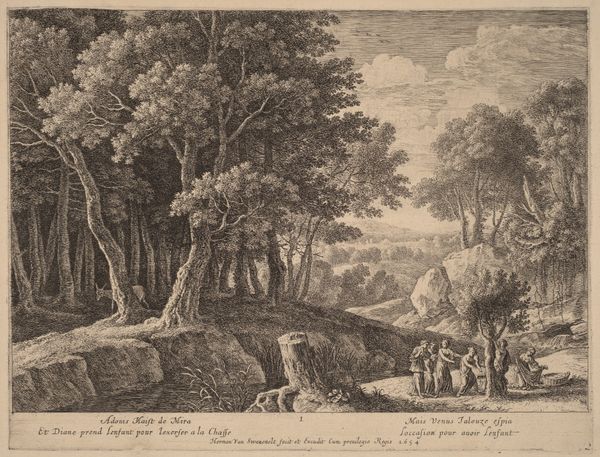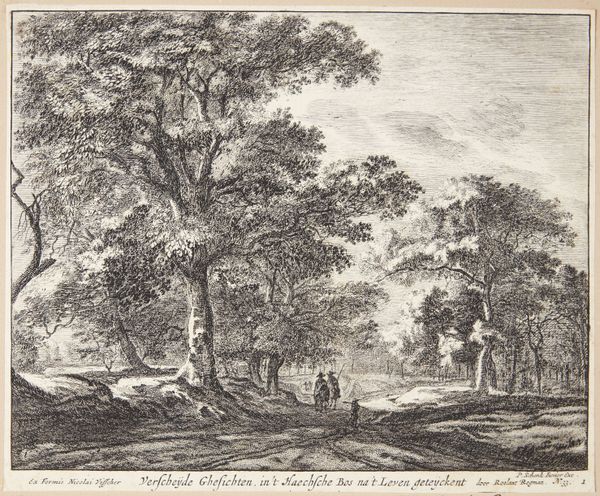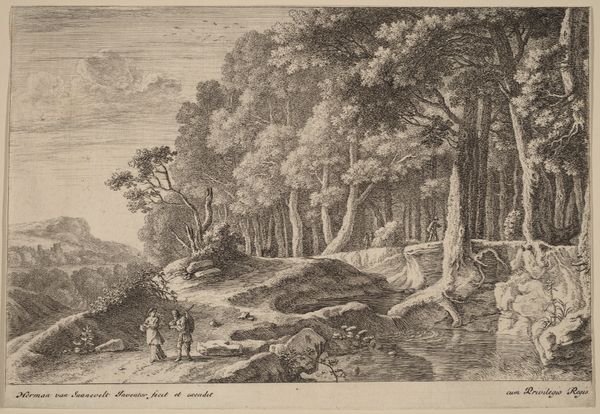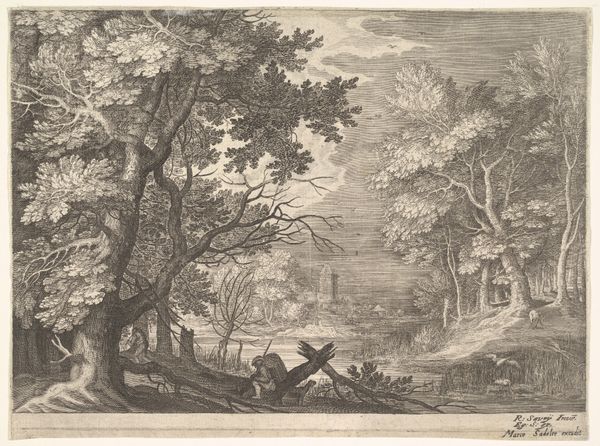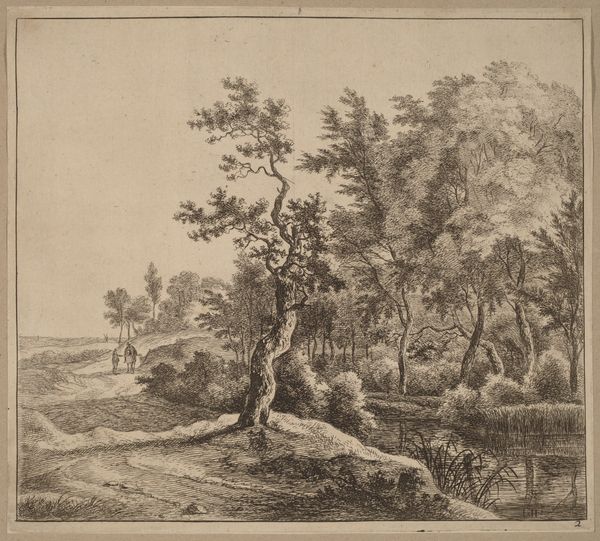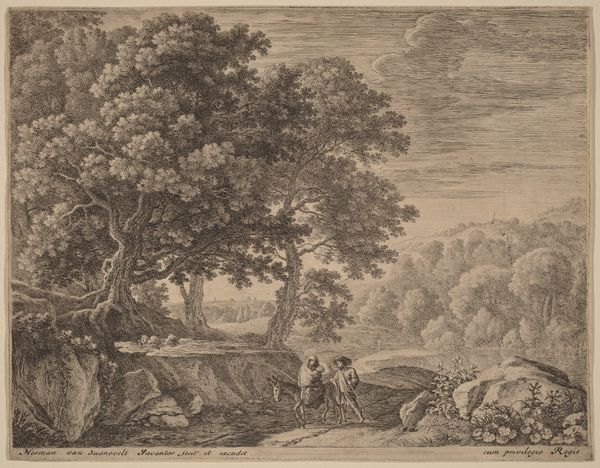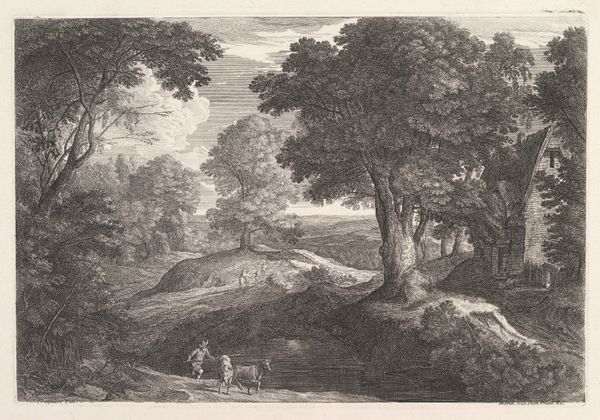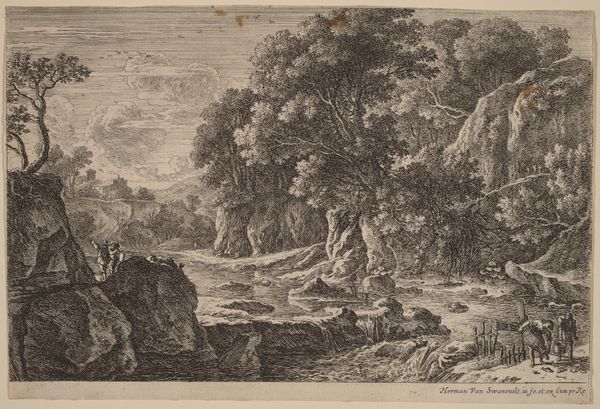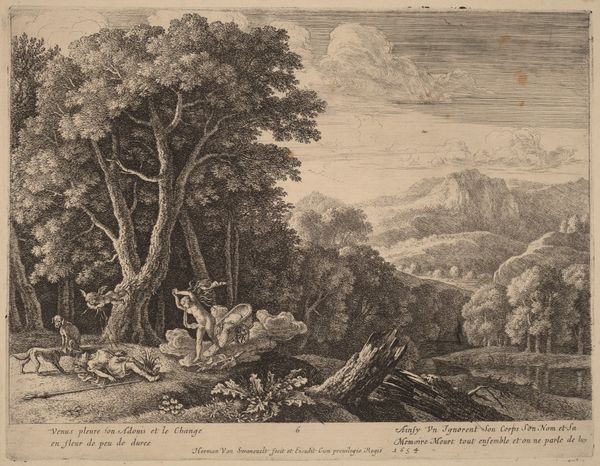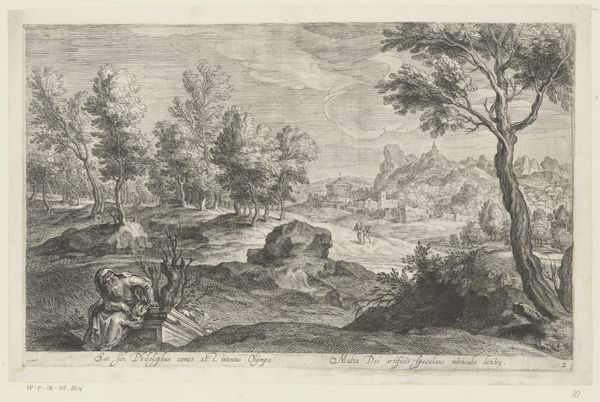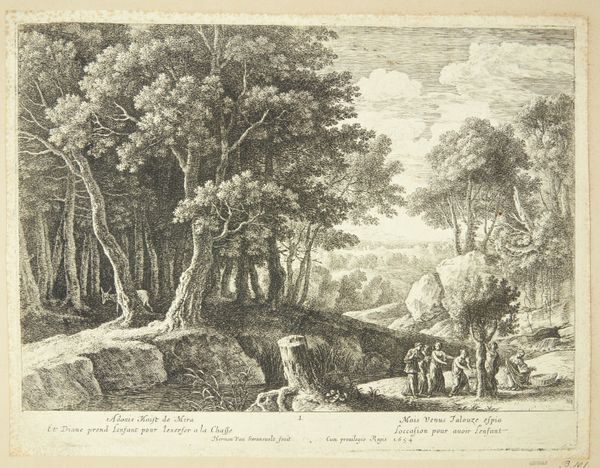
print, etching
#
baroque
# print
#
etching
#
landscape
#
history-painting
Copyright: National Gallery of Art: CC0 1.0
Curator: This is Herman van Swanevelt’s etching, "Venus Abducting Adonis," dating from 1654. It presents a pivotal moment from classical mythology, rendered with remarkable detail. Editor: It's an almost claustrophobic composition, isn’t it? So much dense foliage! I immediately notice how small the figures are relative to the immensity of the forest; and I see two groups, a chariot carrying two figures in the left corner and nymphs in the opposite corner Curator: Precisely. Van Swanevelt, while based in Rome, specialized in landscapes that synthesized both Dutch and Italian artistic traditions, fitting within the baroque aesthetic. He has an impressive ability to craft a highly theatrical landscape scene from relatively spare means. The drama of the abduction is enhanced by the overwhelming forest setting. Editor: Abduction... I see it but also consider the gendered power dynamics present in the image. Venus, the goddess of love, takes Adonis—a mortal male—almost as a prize. What implications might this have for 17th-century audiences regarding societal expectations or male and female roles? Also, Diane refuses to participate in this narrative. Curator: A rich point! It speaks to a tradition of art where mythology wasn’t just about narrative, but also a commentary on the societal constructs of the time. Consider how prints circulated—these images entered homes, public spaces. The way Venus is presented here solidifies the image's place within existing dialogues about virtue, desire, and power. Editor: This composition raises the possibility that landscape operates not merely as backdrop but also as an active character shaping the scene, influencing our reading of the narrative. We witness how constructed natural space interacts to amplify a sense of concealment. It creates an inescapable feeling of vulnerability. Curator: Absolutely, and by drawing us in as observers to the "private" act, this etching speaks directly to the viewer. I think the piece makes you really think about the role images had in spreading narrative. Editor: This work reveals its significance through its nuanced interplay of figure, theme, landscape, and distribution medium, inviting an analysis far beyond simple artistic style. Curator: Indeed. Reflecting on this piece allows us to better see art as a political artifact of power—as much for past viewers as for our contemporary interpretations.
Comments
No comments
Be the first to comment and join the conversation on the ultimate creative platform.

